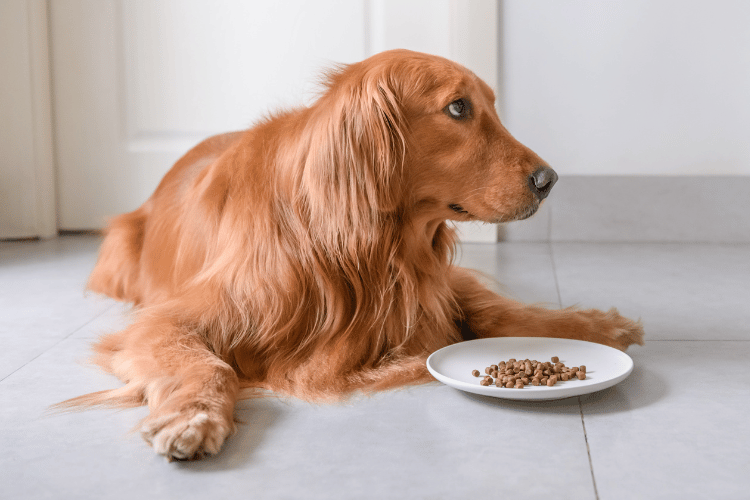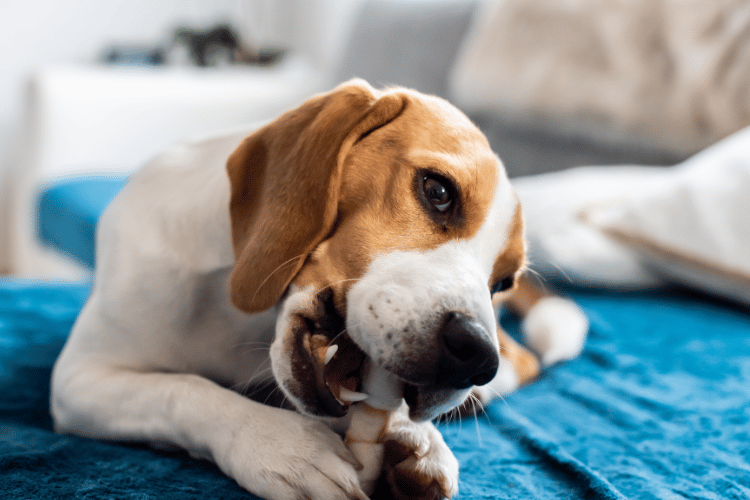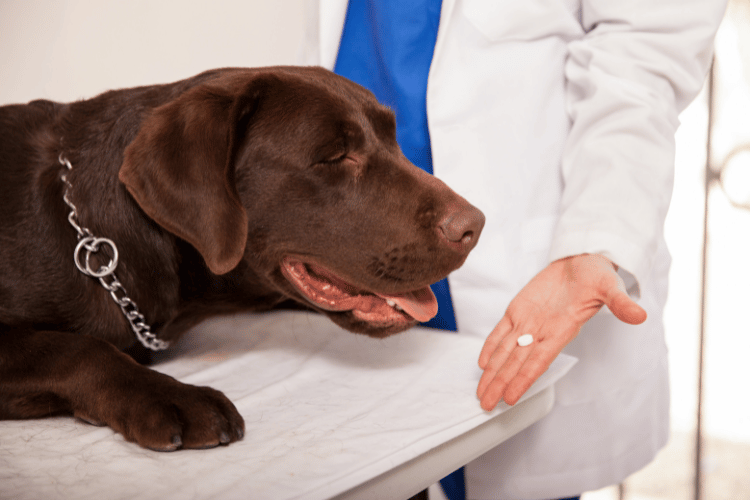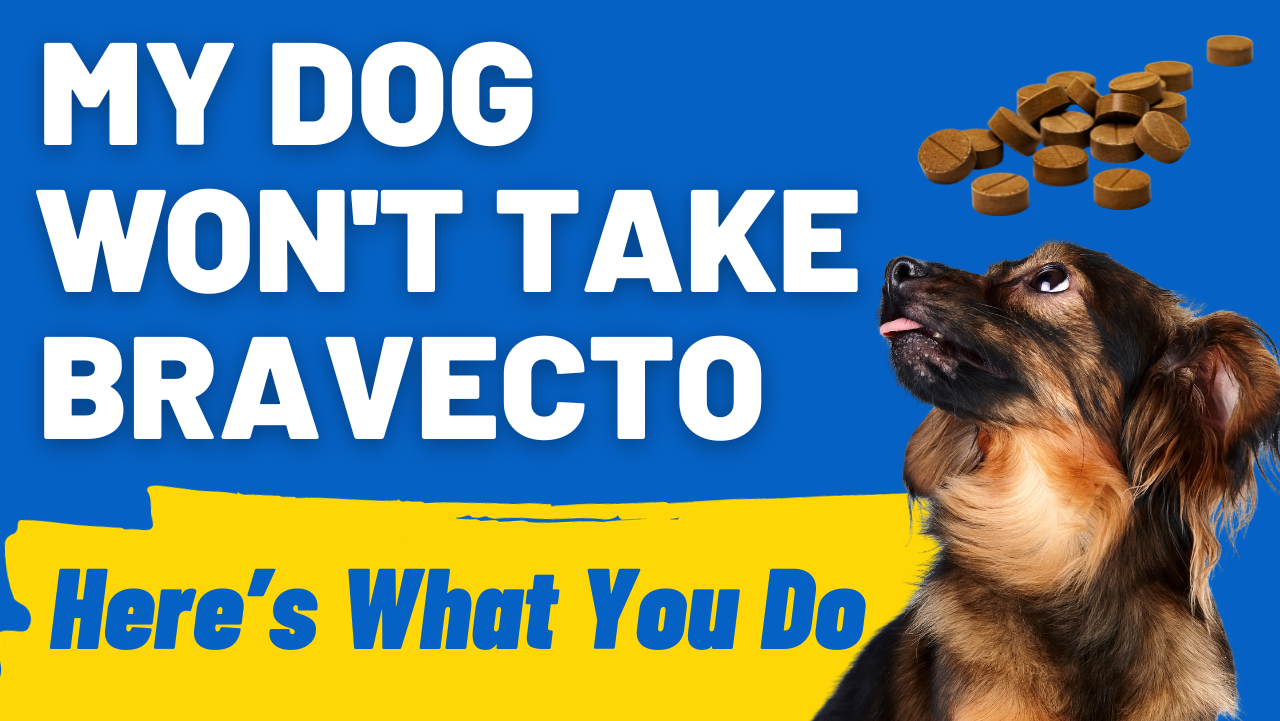Bravecto is a pork-flavored chewable tablet given to dogs as a medical treatment for black-legged tick and flea control recommended by vets for dogs six months old and up. Puppies and younger dogs that weigh at least four pounds can take Bravecto 1-Month.
Available only by prescription, the dosage is easy enough: one tablet every 12 weeks. When taken, Bravecto kicks into effect after two hours and continues killing fleas for up to eight hours and up to 24 hours for ticks.
It also works to prevent future flea infestations and paralysis ticks for the whole duration of those 12 weeks until it’s time for another dose.
The problem isn’t with the pill; it’s with how to get your furry friend to take it. If your dog won’t take Bravecto, then this guide is for you.
How Do I Get My Dog to Eat Bravecto?
Here are the two common ways you can get your dog to take Bravecto Chews. Either way, make sure you confirm that the tablet has been swallowed.
Directly in the Mouth
The quick and effective way to get your dog to take Bravecto is to place it directly into their mouth. This should be done at or around your dog’s mealtime.
One thing to remember is to quickly place the pill as far back as you can. However, try not to put your fingers or hand too far back in their mouth to avoid stimulating a gag reflex.
Another trick is to ask your vet for a pill pusher. Mainly used on small dogs, it works by pushing the pill into the back of the dog’s throat. Once mastered, it can be quite effective.
Are you interested in reading our post, My Dog Won’t Keep a Cone On (Answered).
Mixed with Food

Another effective way is to mix Bravecto Chews with food. The main ingredients in the pill work best when given with a meal and not taken on an empty stomach.
The important thing is to make sure the dog takes the entire tablet. Another thing to keep in mind is to not break the pill or divide it in half.
What Can I Use Instead of Bravecto?
Even though studies show that Bravecto is highly effective as both a topical and oral flea and tick treatment, you may still want to look for an alternative. In this case, you’ll be happy to know that there are nearly half a dozen on the market that work just as effectively.
It’s worth mentioning that all oral flea and tick prevention medications can lead to upset stomachs. That’s why it’s critical to administer them with food.
They should also be used with caution in dogs with a history of seizures. So, clear any product with your vet first.
Here are a few notable substitutes for Bravecto that also require a prescription from your vet.
- Comfortis
- Credelio
- NexGard
- Simparica
- Trifexis
Does My Dog Need to Chew Bravecto?

The more common way to administer Bravecto is by giving your dog a Tasty Chew. Giving the tablet with food makes it easier for your dog to chew and swallow the tablet.
Yet, this isn’t the only way you can give your dog Bravecto. You may be surprised to find out that it’s also available as a Topical Solution that comes with an ‘easy Twist’n’Use applicator.’
To apply, part the hair between your dog’s shoulder blades. Then, give the applicator a gentle squeeze and place between 2–4 drops along your dog’s back.
We should note that Bravecto is only available for dogs who weigh over four pounds and are at least six months of age. There are five Bravecto products, each one comes with a slightly different concentration of the main ingredient, fluralaner, made specifically for different weight ranges.
Here’s a guide to the amount of chewable tablet or Topical Solution you should give your dog per dose based on their weight and age:
- Toy dogs weighing 4.4–9.9 lbs.: one yellow box tablet or solution
- Small dogs weighing 10–22 lbs.: one orange box tablet or solution
- Medium-sized dogs weighing 22.1–44 lbs.: one green box tablet or solution
- Large dogs weighing 44.1–88 lbs.: one blue box tablet or solution
- Extra-large dogs weighing 88.1–123 lbs.: one pink box tablet or solution
- For dogs over 123 lbs.: a combination of tablets or solutions as prescribed by the vet
How Do You Give an Unwilling Dog a Pill?
One technique to give stubborn, unwilling dogs their pills is one that’s become second nature to seasoned pet owners and experienced vets. It’s known as the ‘Bait and Switch’ method.
It’s where you present your dog with three pieces of the same treat, like thick slices of hot dog. Hide the pill in only one. Then, give your dog the first treat without the pill.
Next, give them the second treat with the pill in it. Finally, give them the third piece of food without the pill.
Simple as that!
If you’re looking for other techniques, below are a few other things you can try to get your unwilling dog to take a pill.
- Always wash your hands before giving your dog any type of medication to remove its scent.
- Never let your dog see you opening the bottle or taking out the tablet.
- Ask the vet to prescribe a tablet in your dog’s preferred flavor.
- Hide the pill in your dog’s food like inside a cube of boneless chicken breast or a piece of marshmallow or mini marshmallows, depending on your dog’s size and age.
- Hide the tablet in a Pill Pocket treat in your dog’s favorite flavor.
- Cover the pill with a dab of chunky peanut butter, applesauce, or yogurt.
- Feed them the pill off a spoon or even off your own plate
- Get your dog to perform a trick or two, then give them the pill hidden in a special treat or covered in something they like, such as peanut butter.
- Ask your vet to administer the pill.
What Is the Vet Technique to Give a Dog a Pill?

For most vets, their technique revolves around the idea of giving a pill when everyone, including your pooch, is distracted. Your dog doesn’t see it coming and they’re slightly taken off guard, which doesn’t give them time to spit it out or run away.
Vets recommend that you use the middle finger of your right hand to pull open the dog’s lower jaw. Keep this finger over their small incisor teeth, but not over the sharp canine teeth.
Next, tilt your dog’s head slightly back and drop the pill over the tongue as far back as you can. Close their mouth immediately. To encourage them to swallow, gently blow on your dog’s nose.
If your dog vomits after taking Bravecto or shows any other adverse effects, contact your vet immediately to find out whether you should re-dose.
On the other hand, if your otherwise healthy dog vomits within three hours after taking a Bravecto pill, it’s recommended that you re-dose. Make sure you wait 24 hours to ensure that your dog doesn’t vomit again.
Have you seen our new must-read post, Dog Won’t Get Out of Bed, Here’s Why… It’s an eye-opener for all dog owners!
How Do You Hide the Bitter Taste of Medicine for Dogs?
Since your dog’s sense of smell is nearly 10,000 times stronger than yours, you need to be smart about hiding the smell and taste of bitter medicine.
A good technique to try is to place the pill in a bowl of food with strong odors. These can be anything from soft cheese and salmon to fish meal and liver.
We should note that wet food acts as a better camouflage than dry food. So, whichever type of smelly food you end up using, make sure it’s wet and gooey.
To Sum Up
As a pet parent, you’ve probably come across times when your dog won’t take Bravecto or any other type of medication for that matter.
We’re here to tell you that this isn’t only normal, but quite expected. Their sense of smell and natural tendency to act out makes it hard to reason with them.
They have no qualms about treating their tick and flea infestations or preventing further attacks. They only want to play, eat, and have a good time with their two-legged friend.
That’s why, you need to have a few tricks up your sleeve. Remember, it’s not about misleading them into doing something harmful; you’re only doing it out of love.




